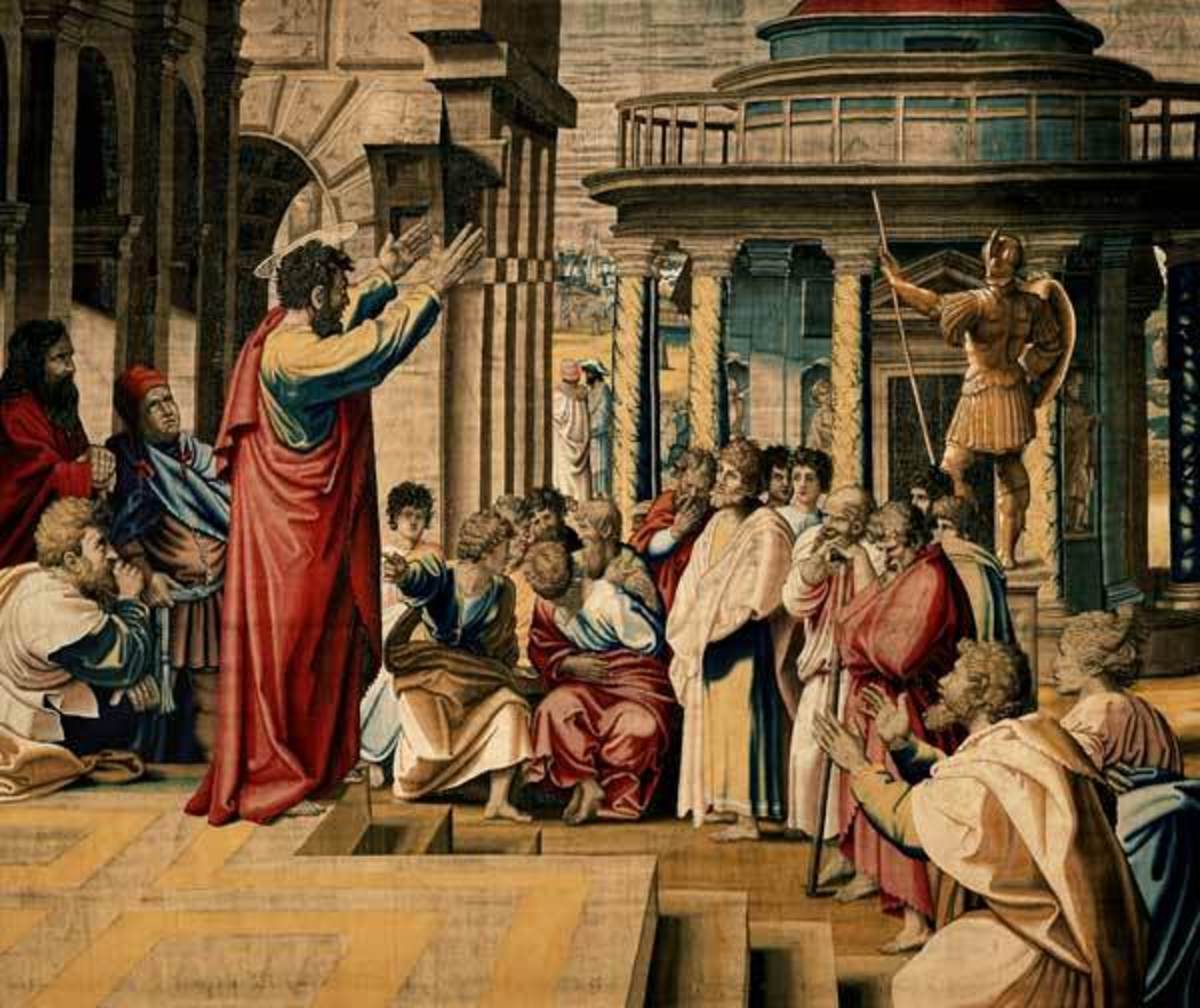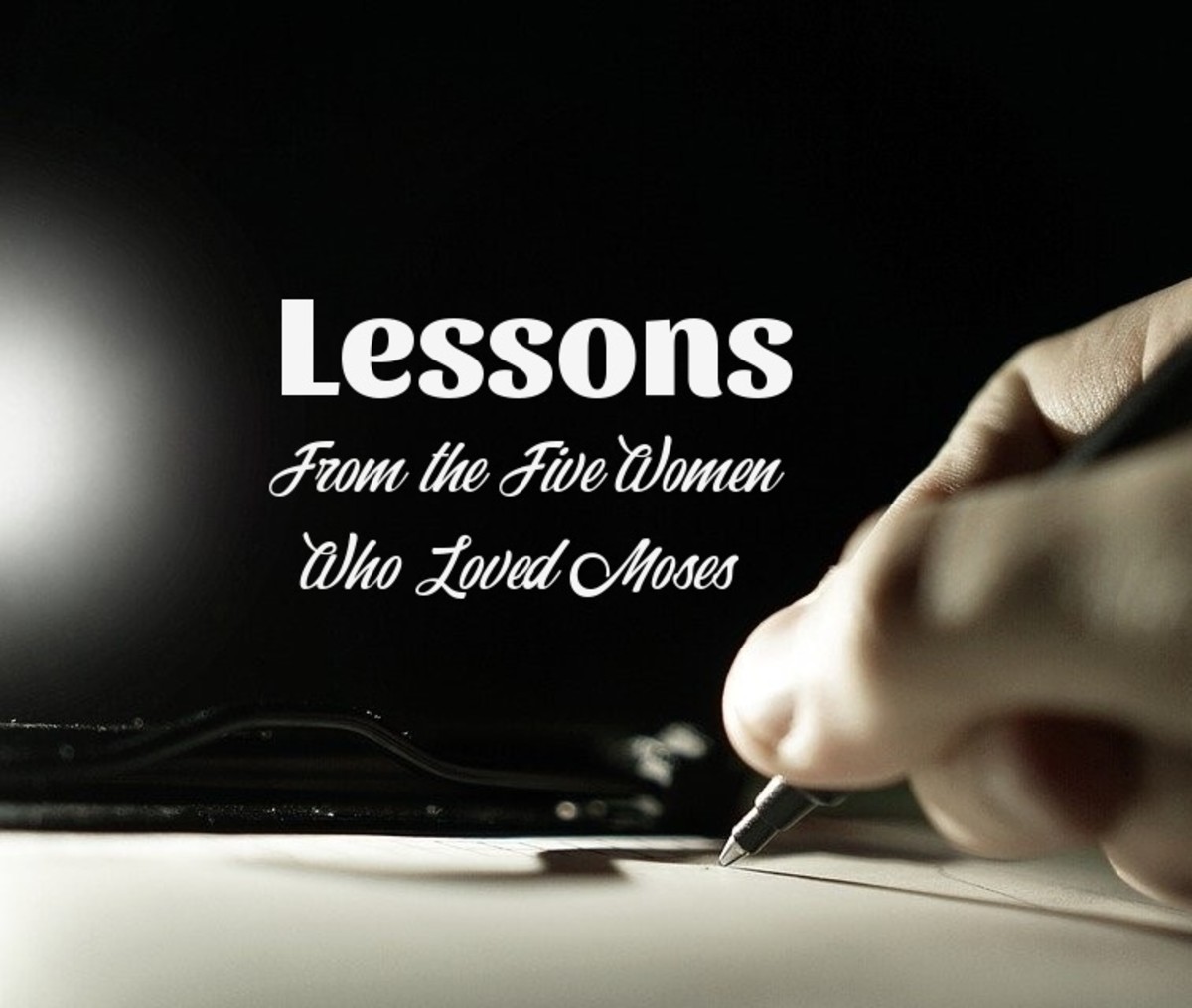Lessons From the Garden of Eden4
Part Four:
Original Sin
Accepting the premise that the concept of inadequacy played the key role in the temptation of Eve opens the door to a whole new way of understanding one more foundational principal of modern morality: Original Sin.
And this new understanding is actually a very ancient understanding -- because nothing new is being added to the original story to arrive at it. The only thing that has happened is that all the old preconceptions of what the story and Original Sin are all about have been stripped away. The story is now being laid bare for what it is and it’s primal truth freed to be seen in a clear and new light.
The interaction between the serpent/Satan and Eve has been considered for all the ages as the Petrie dish for Original Sin. It is the point at which Sin entered the world. How this Sin has been defined/interpreted has great variation – and vagueness. Some say it is sexually related. Some say the root is disobedience. Some will even say it is curiosity or independence.
One thing the different interpretations of Sin do hold in common is the idea that Sin is a situation that causes a break with God. Sin causes a disturbance in the relationship between Mankind and God. This is true. This is accurate. The problem arises when the definition of Sin comes into play – when the attempt to determine what Sin and especially the Original Sin is all about.
Based on a close examination of the interaction between the serpent and Eve, the most accurate, true-to-the-text meaning of Original Sin is this:
Original Sin = the acceptance of personal inadequacy.
Eating of the apple is merely the metaphoric symbol of the acceptance of the concept.
And what greater break with one’s relationship with God could there be than when one does not accept that God’s creation is whole and complete in and of itself.
Throughout the Creation account that precedes the Garden narrative, there is a refrain that is heard after each Creation event: “And God saw that it was good.”
The refrain is even amplified after Man – male and female – were added into the mix: “And God saw that is was very good.”
Simply put, God was very pleased with His creation and with Man and Woman. Now, if He felt either of them was not quite right, would he not have done a revision?
But He didn’t. He looked at Man and Woman and said, “Bull’s Eye! I hit the mark. I made ‘em right! Nothing more need be done, nothing left to add. Perfect. It’s all very good.”
But along comes the serpent and Eve and the suggestion that she doesn’t quite measure up.
What greater “sin” could there have been committed than to say to God, “Ah, Sir, you actually didn’t get it right. I don’t have the knowledge of Good & Evil. Therefore, I’m not the same as the others, and I feel…” – what? – inadequate.
And, to add to the transgression, Eve, guided by the serpent, decided not to take the issue up with God, but to take it upon herself to perform the appropriate upgrade.
What an interesting conversation it could have been had Eve said, “Excuse me, serpent. I understand what you are saying. Let me take this up with God and see what He has to say.”
That could have been a course of action. Eve could have done this. But it wasn’t and she didn’t. Instead, we have the created taking it upon itself to improve upon the Creator’s work.
And once again, what greater “sin” could have been committed?
What is it that breaks our relationship with God? Not accepting the goodness and completeness of his creation – that’s you and me! We are perfect as we are created by Him.
Now here is where our status today gets muddied and susceptible to the same scenario that engulfed Eve and Adam. In reality, we are perfect in and of ourselves, but we are not flawless, nor are we limitless.
The concept of perfection – in a Biblical context – has nothing to do with action. It, like the concepts of Good & Evil, is a function of character. We are perfect as who we are. Complete. End of story.
Our perception of ourselves, however, tends to be another matter. Our tendency is to view ourselves as flawed in that there are things we can and cannot do. And then there are the injuries that happen to us. We suffer wounds to our psyche. We are moody. We can’t do things right. We can’t choose the right mate. We’re ugly. “What’s wrong with me??”
The correct answer to this age old question is: Nothing. It’s not a question of whether something is right or wrong with us. It’s simply an issue of adjustment. And what needs adjustment? Our perception of ourselves. It is difficult to accept that we have flaws, that we have limitations. It’s uncomfortable for us.
And yet, it is through these flaws and limitations that we can reach out and connect with others. We have gifts and capabilities. Others have them, too. I have limitations. You do, too. But if we work together, we can compensate, enhance, strengthen. We need to work together to achieve our potential and gain a truer understanding of what it means to be human and a part of Creation. Celebrate our diversity, revel in our unity.
A festival of Acceptance!
Only it hasn’t quite turned out that way… but enough of this digression.
With Original Sin being understood as the acceptance of the idea of our inadequacy, it follows that the concept of sin itself has to be revamped. Sin is not a complex subject. It is not something that needs to be corralled by a set of rules and regulations. It is one thing: inadequacy and its expressions.
Due to the fact that humans have so many ways to express their inadequacies, sin can be made into quite a laundry list of items. But the purpose of this discussion is to strip away all the encumbrances and guilt inducing dressings that religion and society have wedded to the concept of sin. Sin is one thing and one thing only: accepting that we are inadequate and acting on our own to rectify our perceived inadequacy.
So what is the remedy – the anecdote for sin? Self-acceptance. Becoming at peace with ourselves. Loving ourselves. Learning to just “be.” Accepting that God made us the way we are – Perfect – and He sees that that is very good.
This brings us to an important equation. If Evil = anti-being, then Good = being. Going back to the Garden narrative, it was God’s intention for us to live in a complete, self-loving and accepting state of being. To just “be”.
This state of self-acceptance/adequacy, however, was craftily transformed. It came under attack without our being aware of the attack. Eve was just having an intellectually stimulating, theoretical conversation with a fellow Garden dweller. After all, the serpent was probably someone who had entertained not only her but all of her fellow Garden-dwellers on more than one occasion. They had most likely dined together, laughed together, talked often. And yet, everything changed during this one conversation. Her sense of being was being attacked. Actually, worse than attacked. It was wrested from her, and she had no idea that everything she was was under siege.
How revealing is this about the relationship between Good and Evil?
Evil is the continual, sub-awareness, relentless effort to rob us of our sense of being. It is pure anti-beingness. It is against all that would reinforce our sense of being. And it is at it’s “best” when we are the most comfortable.
But this is not cause for becoming paranoid or hyper-vigilant. God, in his infinite wisdom and patience, has provided us with an example of what it means to “be” – to live life as he intended. It is the example of the One who is immune to the anti-being attacks: His Son, Jesus.
We’re about to take a look at Jesus like none other taken before. It may be an unsettling one to some, but it is going to prove to be an enlightening one. And you will never look at Jesus the same way from this point onward.
Jesus, as we are told throughout the New Testament, is the one person who lived without sin.
This is a quality of his character and humanity that has caused a lot of struggle and discussion throughout religious circles – Christian and non-Christian. It is a difficult concept to embrace, this sinlessness. But it doesn’t have to be.
A lot of the problem with His sinlessness is that, according to Jewish law, he broke quite a few. He rebelled against the Jewish authorities. He angered them enough that they sought to “neutralize” Him.
Dissension, lack of respect for authority, lack of respect for accepted tradition, civil disobedience. Not exactly the model of what religion and society tell us is the “sinless” life.
Then there are the bouts of “un-Christian-like” behavior. He drank. He partied. He hung out with prostitutes. He was so close to one that there have been accusations that make a lot of theologians and believers very nervous.
Bottomline, Jesus lived his life in a manner that by the standards of religious practice and expectation today was replete with sin. And yet, the Bible narrative says he was “without sin.”
How can this be?
The answer is beautifully simple. We’ve got the concept of sin all wrong.
If we believe sin comprises the “seven deadly” ones or is the result of breaking the Ten Commandments or the transgression of religious laws/parameters, then Jesus’ lifestyle is problematic.
But if we go back to our new definition of sin that is rooted in our new look at Original Sin, then Jesus surely was One who lived His life without sin.
If sin is defined as accepting ones’ self as created by God, accepting ones’ self as adequate and perfect -- but not flawless -- then Jesus is our Man, for this is exactly how He lived – He never lost sight of himself. He never experienced or expressed inadequacy. He never doubted who He was or how God created Him.
Jesus always knew who and what He was. When as a child he taught in the Temple – bingo! He knew who He was, even then.
Being tempted Himself in the desert? He would not allow the thought of inadequacy to enter his mind, nor would he change his allegiance. Even as He spent his last night before being betrayed in the Garden at Gethsemane, He held true to himself.
He lived his life believing God had made Him perfect just the way He was. He was without sin.
It is interesting to note that since Jesus, Satan and Evil have been defined in contrast to Him. Jesus is the Christ. Satan is Anti-Christ. Jesus = Christ = Good = being. Satan = anti-Christ = Evil = anti-being.
To help further understand this new view of sin, let’s take another giant step back for a global look at Jesus’ life and teachings. First off, what is glaringly missing? He did not give us a list of rules and regulations by which we need to live our lives. He did not show up with the Ten Commandments, 2.0! In fact, he flatly refused to provide anything more than derivatives of the Golden Rule – “Do unto others as you would have them do unto you,” “Love your neighbor as yourself,” “Love your enemies.”
Think about it. This is His one chance to get the message across. This is the one shot God has taken to live amongst us and set us on the right path. If He intended the path to a sinless life to be accomplished through the adherence to a finite set of rules, wouldn’t this have been the perfect time to roll them out? The least he could have done was conduct a few focus groups…. If it meant so much to God that He sent us his only Son to die for us, wouldn’t He have been a little more straightforward about the rules for living a righteous life?
Here’s the second thing we have to see to fully understand this new concept of sin. While living amongst us, Jesus did not create an organization. He cobbled together a loose band of followers, but He didn’t form an organization. Why not?
He was one of us. He knew how important it is for us to belong. He knew our propensity to band together and form groups. There were plenty of groups in His day – secular and religious – so it wasn’t like there were no precedents. He had plenty of time to form an organization. We’re told he had plenty of impact to gain a following. He even had 12 guys willing to do the job. But he never formally organized them. If it were truly important for His message to have an organization through which to deliver it and keep it alive, wouldn’t He have formed one? After all, it would have been much easier to keep things accurate. There could have been a group secretary who wrote everything down. It would have been a whole lot easier. Why didn’t the Son of God do any of this?
Because it wasn’t important. It wasn’t His point. The message was not to be supported by what came after Him or by a set of rules and regulations. He was and is the Message. All we need to know is to be found in Him.
And what is the message? That our fallen state is inadequacy and the remedy for it is to get back to our original state – adequacy: Believing we are who we are, that’s just how God wants us to be and that’s good.
That’s who Jesus was and is. That’s how He lived a sinless life. That’s what is available to us.








